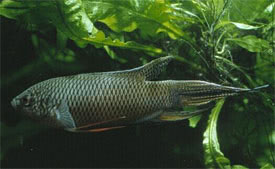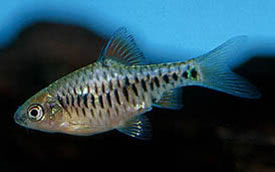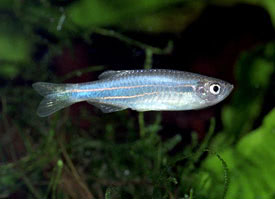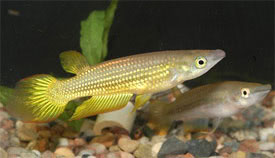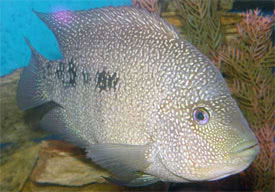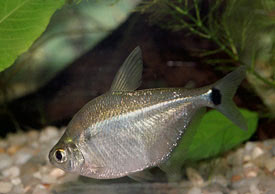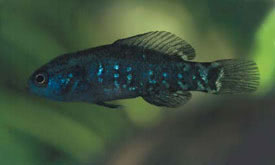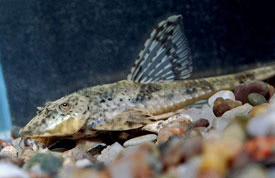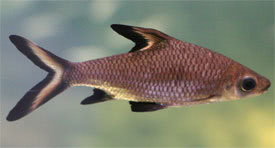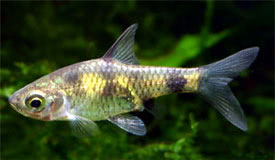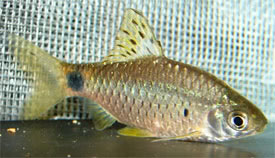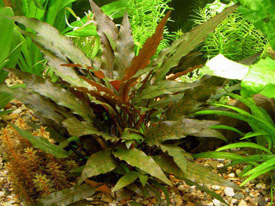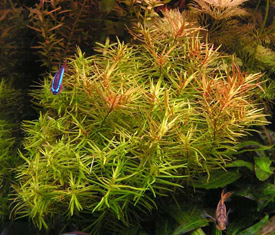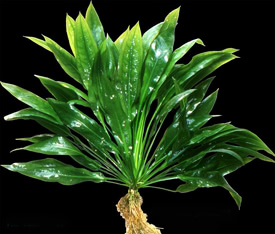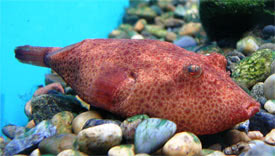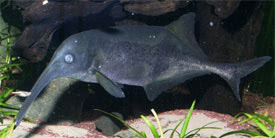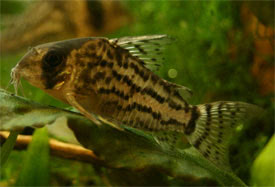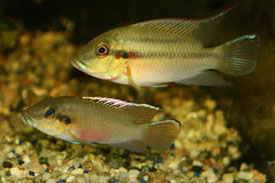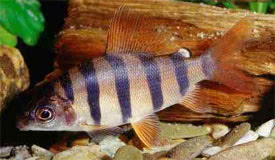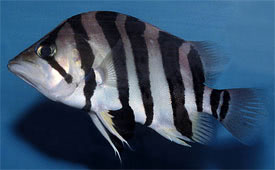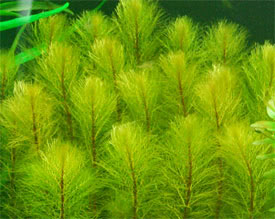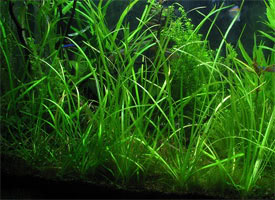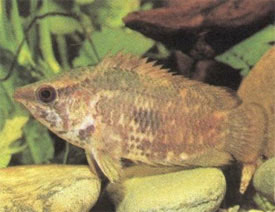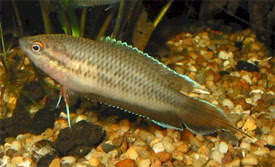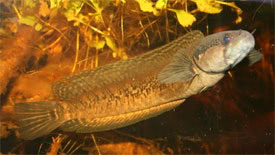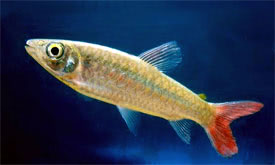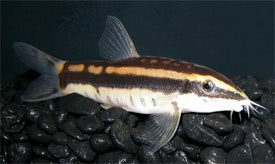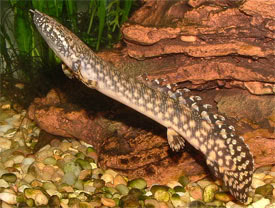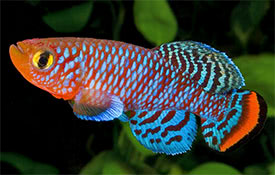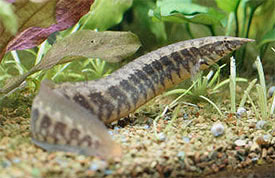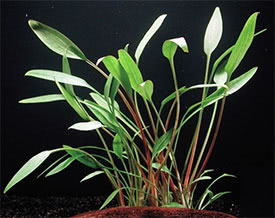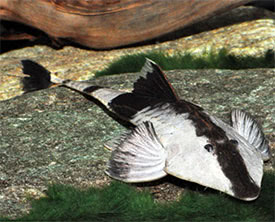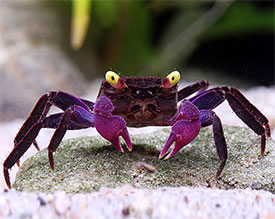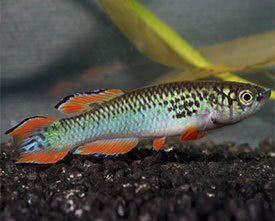
 Magyarul / Hungarian
Magyarul / Hungarian

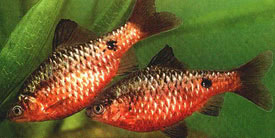
- Scientific name: Pethia conchonius
- Synonyms: Puntius conchonius, Barbus conchonius, Cyprinus conchonius, Systomus conchonius, Systomus pyropterus
- Common name: Rosy barb
- Group: Cyprinids
- Habitat: Asia; Bengal and Assam
- Size: 10 cm
- Biotope: Inhabits still and moving waters.
- Social behavior: A lively, schooling species that may disturb quieter species in a community tank. Adults may nibble fine or soft leafed plants.
- Diet: Live, Brine Shrimp, insect larvae, Tubifex, flying insects, flakes, spinach.
- Breeding: Easy
- Tank: Minimum 150 litres
- Population: 6-8 fishes for 150 litres
- Decoration: Leave large open swimming areas. Plant the corners and rear of the aquarium with hardy plants. The substrate should be fine gravel or sand and a few floating plants add comfort.
- Temperature: 18-27 °C
- pH:6,5-7,2
- Hardness: 5-20 NK°
- Lifespan: 5 years
Description: The general color of the sides have a Yellow tinge in the female and Red hint in the Male. At breeding time the male becomes the most vivid Red. Both sexes have a Black dot edged in Gold near the beginning of the tail fin. The males Dorsal fin is edged in Black with the female only having a trace at the rear of the fin. Both sexes have shiny scales with an Olive Green color and pale centers.
An easy to care for fish the Rosy barb has a lot going for it. Feeding is never a problem as it will eat all flake frozen as well as live food. The tank should be fairly large as this like most barbs is an active swimmer and needs plenty of open spaces. Plant toward the rear and include some floating material if you desire. The Rosy will dig and forage in the gravel, so it should be fairly fine and rounded. A darker color will bring out the Rosy's coloration. Water conditions are not to critical as they will adapt to almost all variations, but they will benefit from aged water and of course the partial water changes we all make (or should be). Temperature is also not a problem as you see from the quick stats the range is large with somewhere in the middle being ideal. They spend most of their time on or near the bottom so make sure its tankmates swim near the middle or top of the aquarium to give the tank a balanced look.
Breeding the Rosy barb is fairly easy. The tank should be large and have a thin layer of gravel. Provide fine leafed plants for the eggs to scatter into. The water should be well aged and have a neutral pH. Place one male and two females in the tank. Spawning usually will take place in the morning and the females are the more active partners. They will chase each other around and the spawning will take place in one of the plants. The pair will wrap themselves around each other and shake until the eggs are laid. This will happen several times and the number of eggs laid can be very large. The parents are egg eaters and will eat the spawn if given the chance. Remove the trio immediately as they will start eating the eggs even during the spawning. The eggs hatch in about a day and the fry must be fed fine flake food or baby brine. Growth is rapid and the young are easy to care for. Keep up the water changes as the fry require better water than the adults.






